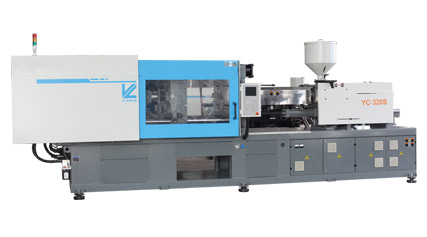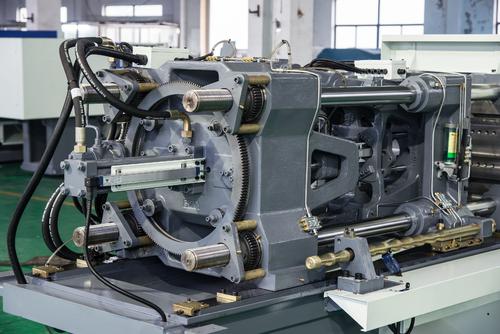What should be paid attention to before starting or stopping the injection molding machine?
What should be paid attention to before ...
2022-10-18
What should be paid attention to before ...
2022-10-18
Plastic injection molding is a popular i...
2022-10-18
Do you know the auxiliary parts of the v...
2022-10-18телефон
086-574-86521850автор: время:2019-10-08Время просмотра:112
Transparent plastics must have high transparency, certain strength and abrasion resistance, impact resistance, heat resistance, chemical resistance and low water absorption. Only in this way can they meet the requirements of transparency in use and remain unchanged for a long time. Transparent plastics must have high transparency, certain strength and abrasion resistance, impact resistance, heat resistance, chemical resistance and low water absorption, Only in this way can the transparency requirements be met in use and remain unchanged for a long time. Common transparent plastics include:
1. Polymethyl methacrylate (commonly known as Yajiali or PMMA),
2. Polycarbonate (code PC),
3. Polyethylene terephthalate (code PET),
4. Transparent nylon, ABS
5. AS (acrylonitrile styrene copolymer),
6. Polysulfone (code PSF)
1) Performance comparison
Material Performance
Transparency J/m2
Hot forming temperature ℃
Shrinkage
PMMA
ninety-two
ninety-five
zero point five
PC
ninety
one hundred and thirty-seven
zero point six
PET
eighty-six
one hundred and twenty
two
Generally, PMMA is still used as the main product, while PET is mostly used in packaging and containers because it needs to be stretched to obtain good mechanical properties.
2) Process characteristics during injection molding
i. Process characteristics of PMMA
PMMA has high viscosity and poor fluidity, so it must be injected with high material temperature and injection pressure. The influence of injection temperature is greater than that of injection pressure, but the increase of injection pressure is conducive to improving the shrinkage of the product. The injection temperature range is wide, the melting temperature is 160 ℃, and the decomposition temperature is 270 ℃, so the material temperature adjustment range is wide and the processability is good. Therefore, the improvement of fluidity can be started from the injection temperature. Poor impact, poor wear resistance, easy to scratch, easy to crack, so we should improve the mold temperature, improve the condensation process to overcome these defects.
ii. Process characteristics of PC
PC has high viscosity, high melting temperature and poor fluidity. Therefore, it must be injected at a higher temperature (270-320T). Relatively speaking, the range of material temperature adjustment is narrow and the processability is not as good as PMMA. The injection pressure has little effect on the fluidity, but the injection pressure is still high due to the high viscosity. In order to prevent the generation of internal stress, the pressure holding time should be as short as possible. The shrinkage rate is large and the size is stable, but the internal stress of the product is large and easy to crack, so it is better to improve the fluidity by increasing the temperature rather than the pressure, and reduce the possibility of cracking by increasing the mold temperature, improving the mold structure and post-treatment. When the injection speed is low, ripples and other defects are easily generated at the gate. The temperature of the radiation nozzle should be controlled separately, the mold temperature should be high, and the resistance of the runner and gate should be small.
Iii. Process characteristics of PET
PET has high molding temperature and narrow material temperature adjustment range (260-300 ℃). However, after melting, PET has good fluidity, so its processability is poor. In addition, anti flow devices are often added in the nozzle. The mechanical strength and performance are not high after injection, and the performance can only be improved through stretching process and modification. The mold temperature is accurately controlled to prevent warping. For the important element of deformation, hot runner mold is recommended. The mold temperature is high, otherwise it will cause poor surface gloss and difficulty in demoulding.
3) Defects of Transparent Plastic Parts and Solutions
i. Craze: due to the influence of anisotropy of internal stress during mold filling and condensation, the stress generated in the vertical direction causes the resin to flow upward, while the refractive index of the resin is different from that of the non flow orientation, resulting in flash lines. When it expands, it may cause cracks in the product. In addition to the attention paid to the injection molding process and mold, the best product is annealed. If PC material can be heated to above 160 ℃ for 3-5 minutes, then it can be naturally cooled.
ii. Bubble: because the water vapor and other gases in the resin cannot be discharged, or due to insufficient mold filling, the condensation surface condenses too quickly to form a "vacuum bubble".
Iii. Poor surface gloss: mainly due to the large roughness of the mold, on the other hand, premature condensation makes the resin unable to copy the state of the mold surface, all of which make its surface slightly uneven, and make the product lose luster.
Iv. Ripple: refers to the dense ripples formed from the center of the straight gate. The reason is that the melt viscosity is too high, the front end material has condensed in the mold cavity, and the later material has broken through the condensing surface, causing the surface to appear the ripple.
v. Whitening, fog halo: mainly caused by the dust falling into the raw materials in the air or the water content of the raw materials is too large.
Vi. White smoke and black spots: mainly caused by the decomposition or deterioration of resin in the barrel due to local overheating of the plastic in the barrel
Specific selection of transparent plastics
1、 Daily transparent materials:
1. Transparent films: PE, PP, PS, PVC and PET for packaging, and PE, PVC and PET for agricultural use;
2. Transparent sheets: PP PVC PET PMMA and PC;
3. Transparent pipes: PVC PA, etc
4. Transparent bottles: PVC PET PP PS, PC, etc
2、 Lighting fixture materials:
Mainly used as lampshade, commonly used PS modified PS AS PMMA and PC
3、 Optical instrument materials
1. The hard mirror body mainly uses CR-39 and J.D
2. Common HEMA for contact lenses
4、 Glass materials
1. PMMA and PC are commonly used for traffic glass
2. PVF and PET are commonly used in building glass
V Solar materials: commonly used PMMA PC GF-UP FEP PVF and SI
VI Optical fiber material: PMMA or PC for core layer, and fluoroolefin polymer fluoromethyl methacrylate as cladding layer
VII Optical disc material: commonly used PC PMMA
8、 Transparent packaging materials
Surface hardened PMMA FEP EVA EMA PVB, etc
Телефон
